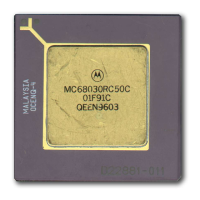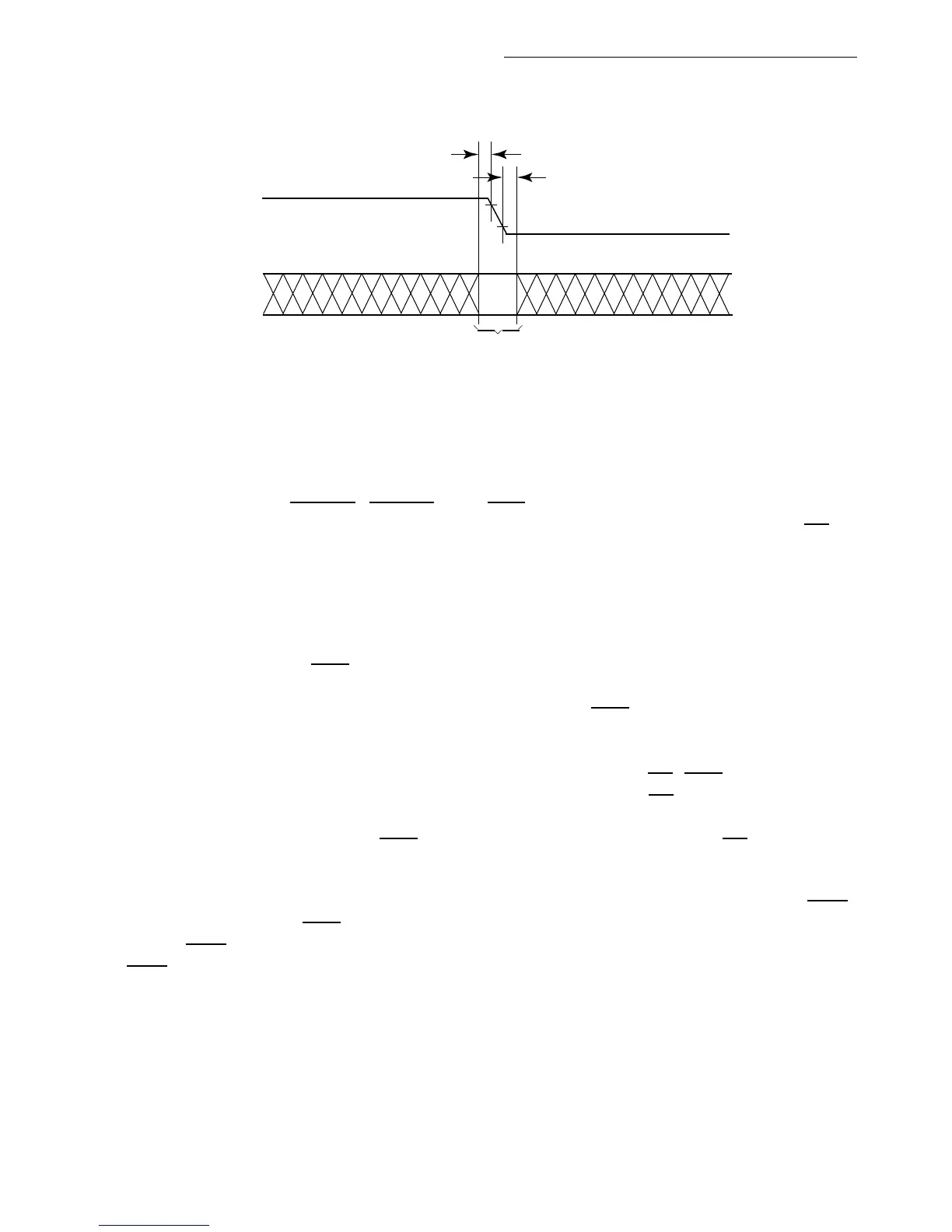Bus Operation
MOTOROLA
MC68030 USER’S MANUAL
7-3
A device with a 32-bit port size can also provide a synchronous mode transfer. In
synchronous operation, input signals are externally synchronized to the processor clock,
and the synchronizing delay is not incurred.
Synchronous inputs (STERM
, CBACK, and CIIN) must remain stable during a sample
window for all rising edges of the clock during a bus cycle (i.e., while address strobe (AS
) is
asserted), regardless of when the signals are asserted or negated, to ensure proper
operation. This sample window is defined by the synchronous input setup and hold times
(see MC68030EC/D,
MC68030 Electrical Specifications
).
7.1.1 Bus Control Signals
The external cycle start (ECS) signal is the earliest indication that the processor is initiating
a bus cycle. The MC68030 initiates a bus cycle by driving the address, size, function code,
read/write, and cache inhibit-out outputs and by asserting ECS
. However, if the processor
finds the required program or data item in an on-chip cache, if a miss occurs in the address
translation cache (ATC) of the memory management unit (MMU), or if the MMU finds a fault
with the access, the processor aborts the cycle before asserting AS
. ECS can be used to
initiate various timing sequences that are eventually qualified with AS
. Qualification with AS
may be required since, in the case of an internal cache hit, an ATC miss, or an MMU fault,
a bus cycle may be aborted after ECS
has been asserted. The assertion of AS ensures that
the cycle has not been aborted by these internal conditions.
During the first external bus cycle of an operand transfer, the operand cycle start (OCS
)
signal is asserted with ECS
. When several bus cycles are required to transfer the entire
operand, OCS
is asserted only at the beginning of the first external bus cycle. With respect
to OCS
, an "operand'' is any entity required by the execution unit, whether a program or data
item.
The function code signals (FC0–FC2) are also driven at the beginning of a bus cycle. These
three signals select one of eight address spaces (refer to Table 4-1) to which the address
applies. Five address spaces are presently defined. Of the remaining three, one is reserved
Figure 7-2. Asynchronous Input Sample Window
t
su
t
h
SAMPLE
WINDOW
CLK
EXT

